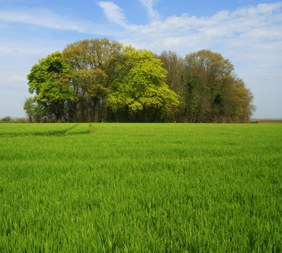Researchers at Ghent University find significant differences between forest edges and forest cores in terms of biodiversity and ecosystem services.
(01-03-2024) Forests contain a lot of biodiversity and provide many ecosystem services such as carbon storage, wood production, and cooling. However, there is an important difference between the biodiversity and services provided by forest cores and forest edges.
This is shown in an international study led by ForNaLab (Faculty of Bioscience Engineering, Ghent University), which has been published in the scientific journal Nature Ecology and Evolution.
"Our research makes it very clear that in addition to forest cores, we must also explicitly include forest edges in understanding and preserving the functionality of forests," states researcher Thomas Vanneste (Ghent University).
Ecosystem services vary depending on location and composition
Forests contain certain plant species and provide certain ecosystem services mainly in their core, while other species and services are more likely to be found at the edges. For example, forest cores contain more plants that are typical for forests, have a greater diversity of species ('phylogenetic diversity'), and offer more cooling in the summer. Forest edges, on the other hand, contain more plant species, have a greater wood production (probably due to the presence of more light and nutrients), offer more nectar to pollinators, and score better in terms of forest rejuvenation (more opportunities for seedlings, probably again due to more light and nutrients).
The structure of the forest also appears to influence the different ecosystem services. Factors such as stratification, crown layer density, and species composition determine which ecosystem services the forest scores higher or lower on. Foresters can therefore propose themselves which ecosystem services they want to maximize in their forest. This can be done through interventions such as thinning, pruning, species selection, etc.
Forest edges are becoming increasingly important
Until recently, ecosystem services were mainly measured in forest cores because forest edges are often subject to influences and disturbances from the outside. Also, most management and policy advice has been developed for forest cores. Due to increasing forest fragmentation, however, as much as 70% of European forests are located within 1 km of a forest edge, 20% even within 100 meters. The enormous relative share of forest edges inspired the researchers to quantify the contribution of forest edges to ecosystem services and compare them with the forest cores.
In the study, the forest cores and edges of 45 different forests in Europe were examined. Four biodiversity indices (different ways to quantify biodiversity) and seven ecosystem services were compared.
"The findings show the need for an integrated approach to forest management, including both forest edges and cores in strategies for preserving biodiversity and ecosystem services. At the same time, our research indicates that there is not one optimal way to manage a forest. If we want to preserve as much biodiversity and other ecosystem services as possible, varied forest management is essential," concludes researcher Thomas Vanneste.
Click here to view the Nature article.
Contact
Thomas Vanneste
Postdoctoral researcher ForNaLab (Ghent University)
thomas.vanneste@ugent.be
+32497851956
Pieter De Frenne
Professor ForNaLab (Ghent University)
Pieter.DeFrenne@UGent.be
+32 497 82 15 02
Maarten De Coninck
Communications Manager Faculty of Bioscience Engineering (Ghent University)
maarten.deconinck@ugent.be
+32478035446
